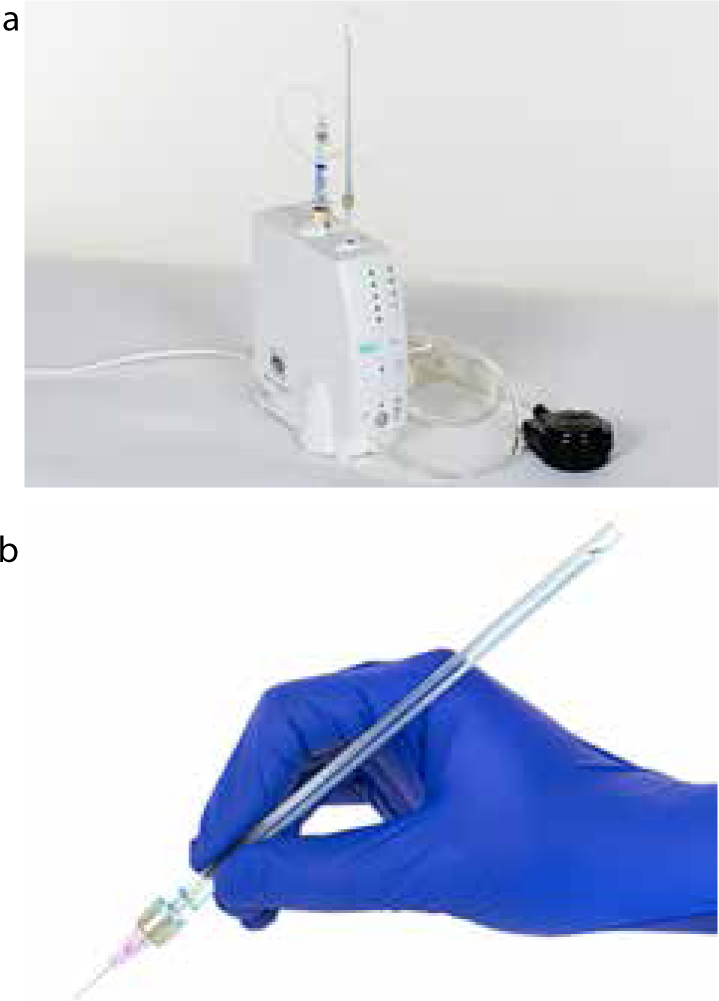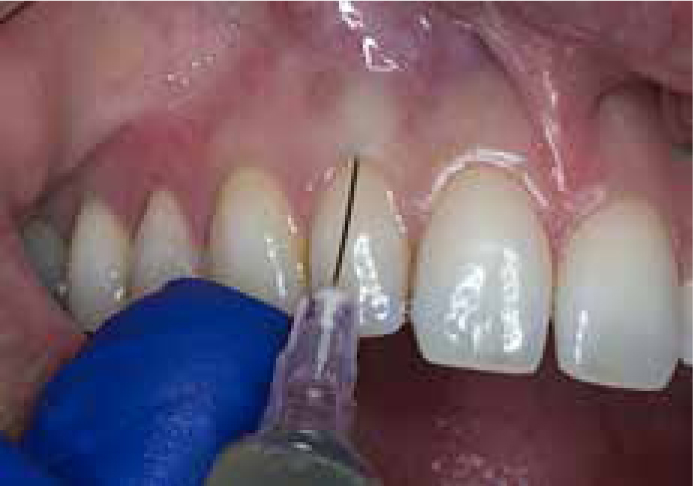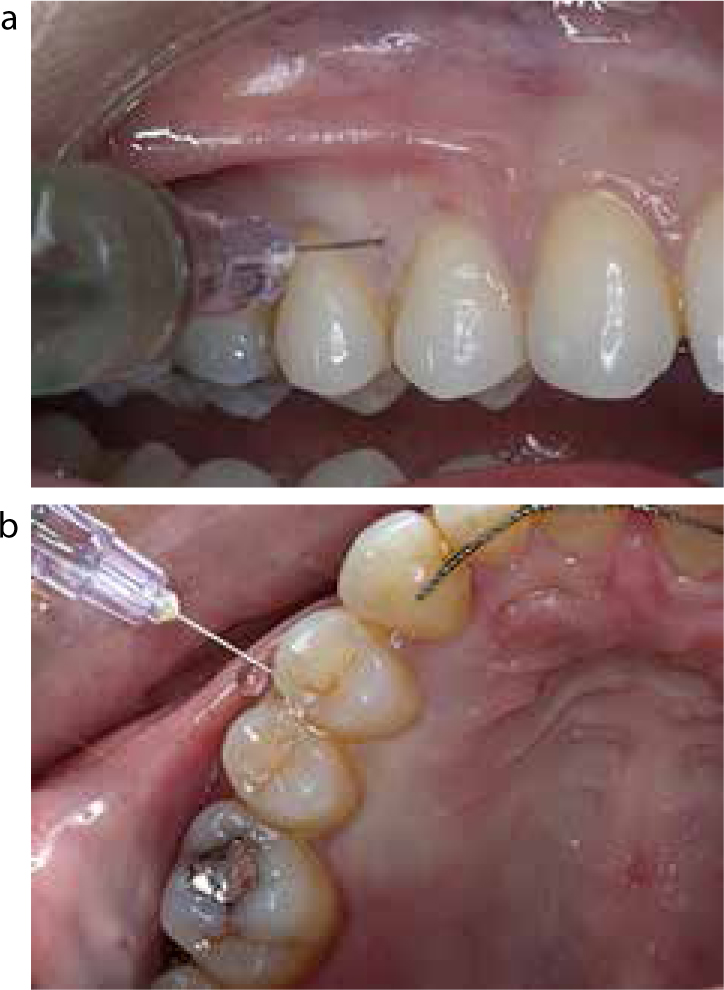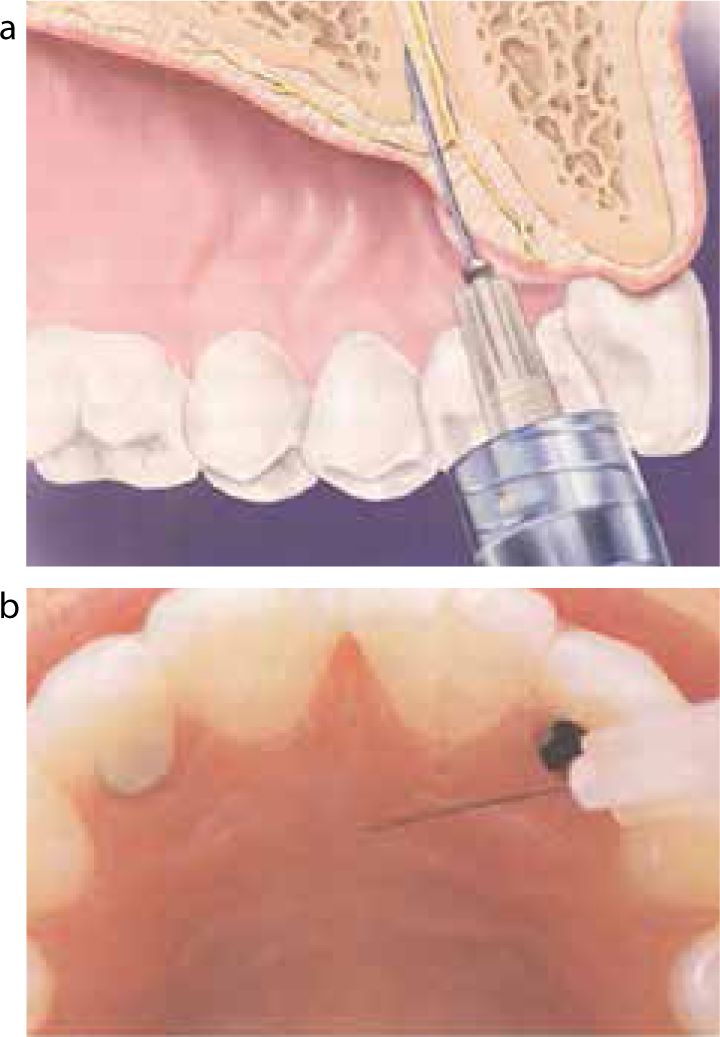Article
In dentistry, the injection of local anaesthesia is a great source of fear and anxiety, especially in children, owing to its associated pain and discomfort. Furthermore, severe anxiety and fear can result in increased pain perception in children and adults alike.1 The most recent child dental health survey reported by parents of 8-year-old children that 17% of their children suffered from moderate to extreme dental anxiety compared with 12% in adults.2,3 In addition, 52% of 12-year-olds in England reported the thought of having local anaesthetic elicited extreme anxiety.2 In adults this figure was reduced to 28%.3
A number of techniques have been described in order to reduce perceived pain during local anaesthetic administration. These include reassurance and distraction, prior application of topical anaesthetic, warming and buffering of local anaesthetic solution, use of a fine needle, local site massage and slow injection technique, as well as computer controlled local anaesthesia delivery (CCLAD) systems.4
CCLAD systems, such as the Wand®, were developed as an alternative to the conventional syringe (Figure 1). It aims to administer a slow, continuous rate of local anaesthesia via a computerized unit to allow time for optimal diffusion of the anaesthetic solution and therefore minimize associated pain. The needle holder is incorporated into a lightweight pen-like handpiece which takes away the visual stimulus of a dental syringe and comes in a range of sizes, including 27 and 30 gauge needles suitable for both infiltrations and inferior alveolar nerve (IAN) blocks. The other end of the handpiece has a cartridge holder which is attached to the top of the computerized unit via the cartridge holder socket. It is designed to accommodate 1.8 ml or conventional 2.2 ml anaesthetic cartridges that are used widely in dentistry. The foot pedal control is used to begin administration of the anaesthetic solution at a controlled constant rate and this speed can be adjusted via the foot pedal or by settings on the unit.

CCLAD systems can be used to perform a variety of dental injections, including infiltrations, intraligamentary (single tooth anaesthesia) and block injections. Its advantages within paediatric dentistry tend to be highlighted, particularly in the case of intra-ligamentary5 and palatal injections.6
The use of topical anaesthetic, such as benzocaine or lidocaine, is optional with the use of CCLAD systems.7 The clinical effectiveness of topical anaesthesia has been debated.8 However, it is still recommended as it has been reported that it can increase the subjective anaesthetic effects and reduce anxiety associated with dental injections due to its placebo effect.9 It also reinforces the idea that, as a general dental practitioner, every step is taken in order to attempt to reduce discomfort, though care should be taken with children who have sensory issues regarding taste.
Intraligamentary infiltrations
Intraligamentary infiltrations allow anaesthesia of an individual tooth to avoid the undesirable sensations and consequences of regional block, or even conventional buccal anesthesia.4 However, it is generally perceived as painful due to the high pressure-low volume technique associated with a conventional syringe.4 The slow and controlled delivery of local anaesthetic by a CCLAD system reduces this associated discomfort as it uses a low pressure-high volume technique allowing for increased patient comfort.4 The slower rate of delivery of anaesthetic solution allows lower volumes of anaesthetic solution to be delivered. This reduces post-operative pain associated with an intraligamentary injection due to decreased extrusion of the tooth post-injection.
For an intraligamentary infiltration, the handpiece can be gently inserted within the periodontal ligament (PDL) (Figure 2). In order to obtain effective anaesthesia, it is helpful to ‘walk’ the needle-tip around the tooth, injecting into the blanched areas during local anaesthetic administration to ensure the PDL surrounding the tooth is fully anaesthetized.10 It may be helpful to chase the blanched area into the buccal sulcus to deliver a conventional buccal infiltration painlessly, and onto the palate as described below.

Palatal anaesthesia
Direct palatal anaesthesia has been reported as one of the most painful intra-oral infiltrations.10 This can be especially difficult in children.11 To overcome this discomfort, the handpiece can be used to achieve palatal anaesthesia via an indirect intrapapillary method.11 In this approach, the handpiece is inserted into the midline of the interdental papilla. Once buccal anaesthesia has been achieved, approximately 2–3mm apical to the tip of the interdental papillae, following a plane perpendicular to the palatal cortical bone (Figure 3). Anaesthetic is delivered and the needle slowly advanced into the anaesthetized tissues ahead until blanching is observed on the palatal aspect. A study by Abdellatif in 2011 carried out on 62 children aged 6–7 years compared pain perception and efficacy of anaesthesia using both the direct and indirect palatal infiltration method. Abdellatif reported that paediatric patients find palatal anaesthesia significantly less painful using this indirect method compared to direct palatal infiltration method.11 He also reported similar anaesthetic efficacy between both palatal infiltration methods.11

Inferior alveolar nerve (IAN) blocks
A CCLAD system can also be used to administer IAN blocks. The handpiece should be held in a pen-grasp between the thumb and index finger allowing for bi-direction rotation of 180º when advancing the needle into the buccal mucosa to reduce pain sensation. This is also done to minimize needle deflection to ensure placement of the needle tip to the intended target.7 The aspiration required for the IAN block can also be carried out using the foot pedal.7 Pain perception from administrating IAN blocks using CCLAD systems has been compared with the conventional syringe method in both children and adults.7,12
Palm et al carried out a study on 33 patients, aged 7–18 years, using a split-mouth design where patients were administered with anaesthetic using both techniques.12 They found significantly lower pain scores for IAN block administration using a CCLAD system when compared to a conventional syringe. Yesilyurt et al carried out a similar study using a similar design on 44 adults aged 18–30 years and found similar results.7
Palatal approach anterior superior alveolar (P-ASA) nerve block
It is anecdotally noted that children and, indeed, adults with a history of trauma or infection to the anterior teeth can be very difficult to anaesthetize.13 Success can be achieved by administering a palatal approach anterior superior alveolar nerve block which should anaesthetize all the maxillary anterior teeth.14 The handpiece is carefully inserted through the incisive foramen to deliver the P-ASA block (Figure 4). This approach is particularly useful when conventional infiltration and intra-ligamentary methods have failed.

Limitations
The CCLAD system does have its limitations. It can be argued that, due to the slow and controlled delivery of local anaesthetic, it is not time efficient.15 However, although the rate of local anaesthetic administration is slow and controlled using a CCLAD system, due to its non-threatening appearance and therefore lack of required systematic desensitization required prior to needle puncture, it can easily be argued that this is not the case.
It can also be argued that painless local anaesthetic administration can be achieved with conventional syringes using methods such as reassurance and distraction, topical anaesthetic and buffering of local anaesthetic solution and the use of a fine needle and slow injection technique, as mentioned earlier.4 A randomized controlled trial by Versloot et al on patients aged 4–11 years concluded that dental anxiety is a greater influence on a patient's perceived dental pain rather than the injection technique itself.16 Though again the novelty factor and non-threatening appearance of a pen-like handpiece used to administer CCLAD system may prove helpful, there is also an associated cost with purchasing a CCLAD unit and replacement handpieces.15
Top tips
Conclusion
Despite some limitations, multiple studies discussed within this article indicate that local anaesthetic administration using a CCLAD system is better tolerated when compared with conventional syringes.5,6,16 It is most useful in needle-phobic patients where the administration of local anaesthetic is the primary barrier to delivering dental care in both children and adults alike. Utilizing CCLAD systems can allow both children and anxious adults to accept dental treatment under local anaesthetic, potentially avoiding the need for sedation and general anaesthetic.17 With good technique and case selection, CCLAD systems are an excellent addition to the armamentarium of any dentist or therapist treating patients.

